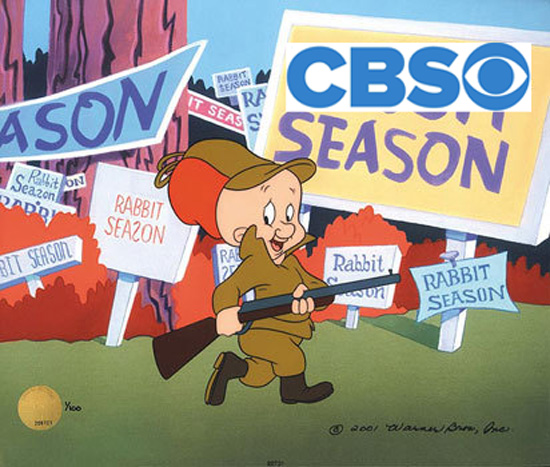
I love it when CW President Mark Pedowitz speaks. So many out there are easy to criticize, calling his claims that Nielsen doesn’t accurately count people watching his network sour grapes, but honestly, the guy has a point. Nielsen is antiquated. The big question is, what would an accurate count of viewers actually do for his network?
Yesterday was the CW Executive session at the Television Critics Association Winter Press Tour (TCAs) and once again ratings was a topic. The only new shows he really had to talk about were The Carrie Diaries, which is premiering tonight and Cult, slated for premiere on Tuesday February 19th. He also didn’t say much about Cult either, other than it’s coming. Otherwise, talk was about renewal of existing shows (Supernatural looks like a lock, it’s too soon to tell on 90210, Nikita, Beauty and The Beast and Hart of Dixie), new development projects, and how Nielsen basically has it wrong.
I’m just a geeky sucker for ratings talk, so it was that part of the conversation that got my attention. NBC’s Bob Greenblatt in his presentation at the TCAs said that the CW median age of viewers was 41.2 years old. He was of course claiming his network was the only one getting younger, even though their median age came in at 48.4 years. A few journalists called out Greenblatt’s statistic as bulls*** the second it happened, since the younger CW viewers are watching through tablets, Xboxes, laptops, phones, etc, viewing methods currently not well captured by Nielsen.
Pedowitz talked about how The CW has contracted with Rentrak and TRA to do that elusive tracking that Nielsen fails to do, and their numbers are working more in The CW’s favor. “We are still experimenting with the new ratings system. We’ve been doing a lot of work with Rentrak and TRA and discovered, surprisingly with Rentrak, that all broadcast, in terms of measuring households, is higher than what Nielsen is reporting. We’re about 21 percent higher.”
Pedowitz also brought up, as has been mentioned before, 20 percent of viewers watch online.
This is where the statistical geek in me wildly wants to start doing all the calculations, eager to figure out what these numbers really mean. Does that 21 percent higher cut into the 20 percent that watch online? Plus, it was mentioned that all broadcast is higher than what Nielsen is reporting. So how much higher are they? I would expect everyone to jump just as high, except CBS, but I’m only basing that on the fact that my elderly father, an avid CBS watcher at their median age of 72, still hasn’t figured out how to work the DVR and has dialup as his internet solution (Fine, the median age is really 56.4, but you get the point).
How are these households measured? A visit to Rentrak’s website shows that they offer various measurement services. They have Media Measurement services (Box Office, Television, Mobile, and Broadband Video) and Home Entertainment services (Video Retailer Revenue Sharing, Studio Direct Revenue Sharing, Industry Rental Intelligence, and Retail Sales Intelligence). When selecting Television, their measurement went even farther. The one that grabbed my attention for purposes of The CW’s increased 21 percent was TV Essentials.
This service is explained in Rentrak’s marketing brochure: “This unique service measures from a database of more than 20 million set-top boxes in all 210 TV markets. Using the TV Essentials system, agencies, advertisers and television networks alike are granted access to exclusive, census-based measurement of television viewing that offers a level of granularity and stability absent from traditional television measurement services.”
What are “set-top” boxes you ask? These are the boxes you use for your cable and satellite services. They use 20 million set-top boxes covering 8.6 million households. You see, Rentrak uses this strange methodology of tracking actual viewers. They also track DVR usage all the way out to 15 days, considering some people do have this habit of hoarding shows and then watching them in one sitting. By using set-top boxes, they also can track Video on Demand usage, even if that falls in their OnDemand services.
Rentrak boasts having over 200 local TV station clients, including every station in the Cleveland market (O-H-I-O!). This means they not only measure at a national level, but have the capability to break that data down to local markets and TV stations, thus giving these entities something to give to their advertisers at the pitch meetings.
Nielsen on the other hand, uses their own boxes, as well as diaries for some households to fill in primarily during the four sweeps periods. They contact 20,000 households, covering roughly 50,000 people, and they pay them a small amount for their trouble. These households are supposed to have a diverse sampling, but considering many of the young people in these families are off doing who knows what on their Xboxes, the fact that all family members are being counted as viewers is questionable. You know they watch TV eventually though. Their chatter about shows is all over their Twitter, Facebook and Tumblr accounts.
I think you already see the trouble, perhaps we can call it quantitative vs. qualitative. So if Nielsen is so inaccurate, why does it continue to this day to be the standard? Turns out, there are two camps out there in the broadcast world – Those that want accurate measurements of actual viewers, and those that just want enough data to make advertisers happy. Common sense dictates that one serves the purpose of the other but really, they’re mutually exclusive.
A lot of the reasoning as to why true ratings is not important to networks is well explained in this article, “Why Nielsen Ratings are Inaccurate and Why They’ll Stay That Way.” Nielsen doesn’t put into ratings those viewers watching on Netflix, Hulu, TV network websites, etc because ads online aren’t the ones shown during network broadcasts. Ads online cost significantly less than ads on broadcast TV and often run less frequently, so networks are more engrossed in counts of who’s watching the ads that pay the big bucks. Nielsen instead tracks this online activity separately, but doesn’t do a whole lot with it other than passing it onto networks with the label “FYI.”
Even DVR ratings by Nielsen are downplayed beyond Same Day, despite the fact advertisers will pay up to three days of viewing. They do track these ratings up to seven days, but they don’t release the figures publicly. They’re usually released by networks who want to boost their shows’ performance through press releases. Yeah they’re providing a more accurate count of viewers, but if there’s less money in it, what’s the point?
The bottom line, the industry really isn’t concerned with what the actual viewers are. They are concerned with the actual viewers that are watching their ads. That’s why its small networks like The CW, who know that they have way more viewers than Nielsen indicates, are speaking out while the larger networks are skirting the issue. If larger networks made a point of showing that a larger percentage of their viewers were watching online and skipping commercials, there goes the lucrative advertising budget that they get based on inaccurate sample data that works in their favor.
Mark Pedowitz is right, but how will counting actual viewers pay off for The CW? Bragging rights to say, “Hey, we’re not as far behind in fifth place as you might think!” Considering how much bad press this network gets about being the “youth oriented” fifth place network, that’s not such a bad thing to have. But the issue becomes more complex. The CW is trying to find a way to monetize alternate platforms, and they need supporting data that forges new territory so they can seek revenue that forges new territory. Pedowitz said The CW monetizes online better than any other network, and someday that online revenue is going to get bigger as more start watching that way.
But what about those that buy on iTunes or get a Netflix subscription? Some of the subscription money goes back to the studios, but the network usually doesn’t see any of it. Of course the money does go to the CW’s parent companies and sister studios since they produce their shows, so as long as they’re happy the network can stay in business.
One argument though is that if truly accurate counts will raise The CW’s ratings, won’t it raise everyone else’s as well? What happens if it turns out young people are actually watching NCIS? This was the problem noted with DVR tracking. All shows are getting DVR tracking boosts, and the top DVR’d shows are usually the ones top in the live Nielsen ratings. Yes, some shows get a DVR boost, but it’s usually pulling them from somewhere like 100thplace to 80thplace.
As a TV fan, I’d rather know the actual viewers of a program. Let’s take my favorite show, Supernatural. Currently this year, it’s getting around 2 million viewers per week. If Rentrak says that actual viewers are 21% higher, that’s really around 2.42 million. If 20% is online viewing, that’s another 400,000, putting it at 2.82 million. DVR +7 has been increasing viewers by around 50%, so that’s another 1 million viewers. Suddenly, we’re talking 3.82 million.
That’s really cool and as a “Supernatural” fan I can start sending all the virtual high fives to fellow fans, but 3.8 million is the bottom of Nielsen live ratings at other broadcast networks, and they’re probably increasing around 20 percent too or more. That number is very respectable for cable, who is suffering from much of the same ratings biases as The CW, especially when their shows repeat frequently through the week and cannot be tracked as well with Nielsen boxes, but shows on cable are supplemented with subscription revenue.
Does this mean that The CW can take all this new data and get more ad revenue? Supernatural has always ranked the lowest in terms of ad rates for the network, even though it’s been one of the higher rated shows. That could have a lot to do with the type of show it is (horror/sci-fi) or maybe it’s been proven that statistically Supernatural fans like to skip the commercials when viewing. How does that change in a new tracking system? Do all hopes pin on online ads?
Maybe it doesn’t for Supernatural but it does benefit other shows. TV is quite a strange business, and it’s hard to cover these aspects in an executive presentation for media folks that aren’t as geeky as me. I’m sure answers will evolve as new ways to track viewers are developed. In the present, the fact remains that TV viewers aren’t being counted accurately, but that only people that seem to care about that are actual TV viewers and Mark Pedowitz. Ah well, at least we have someone in the biz our corner.



